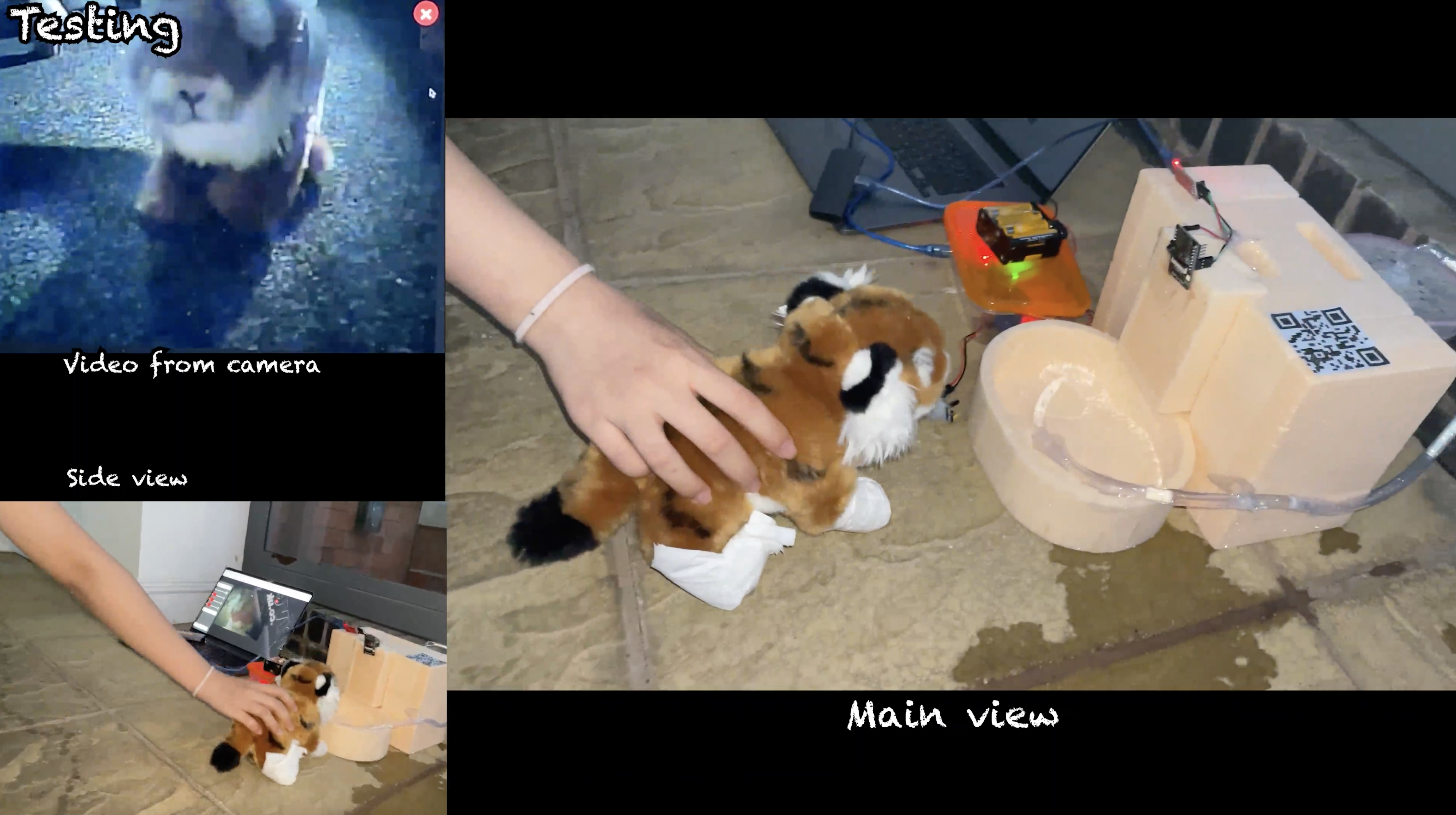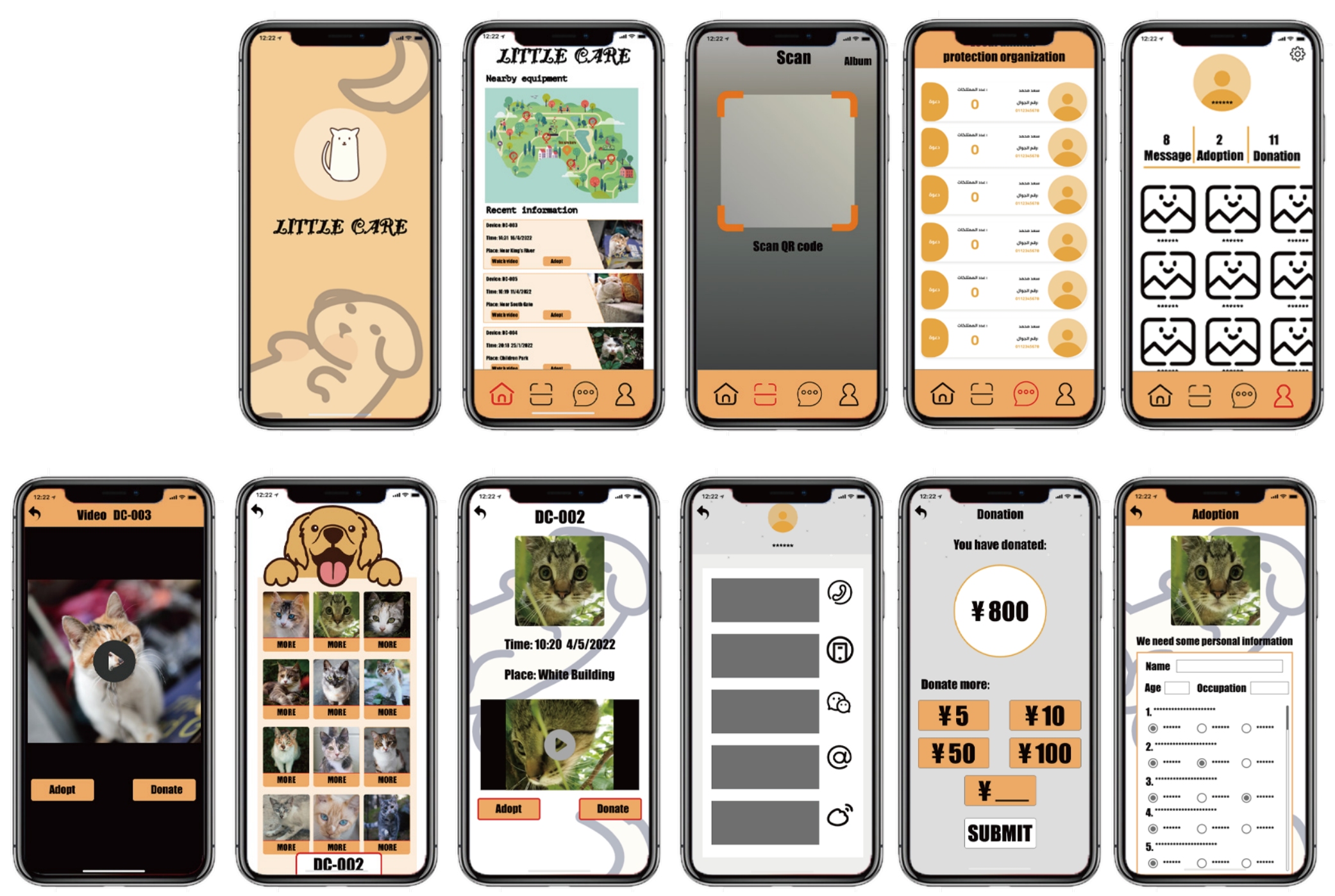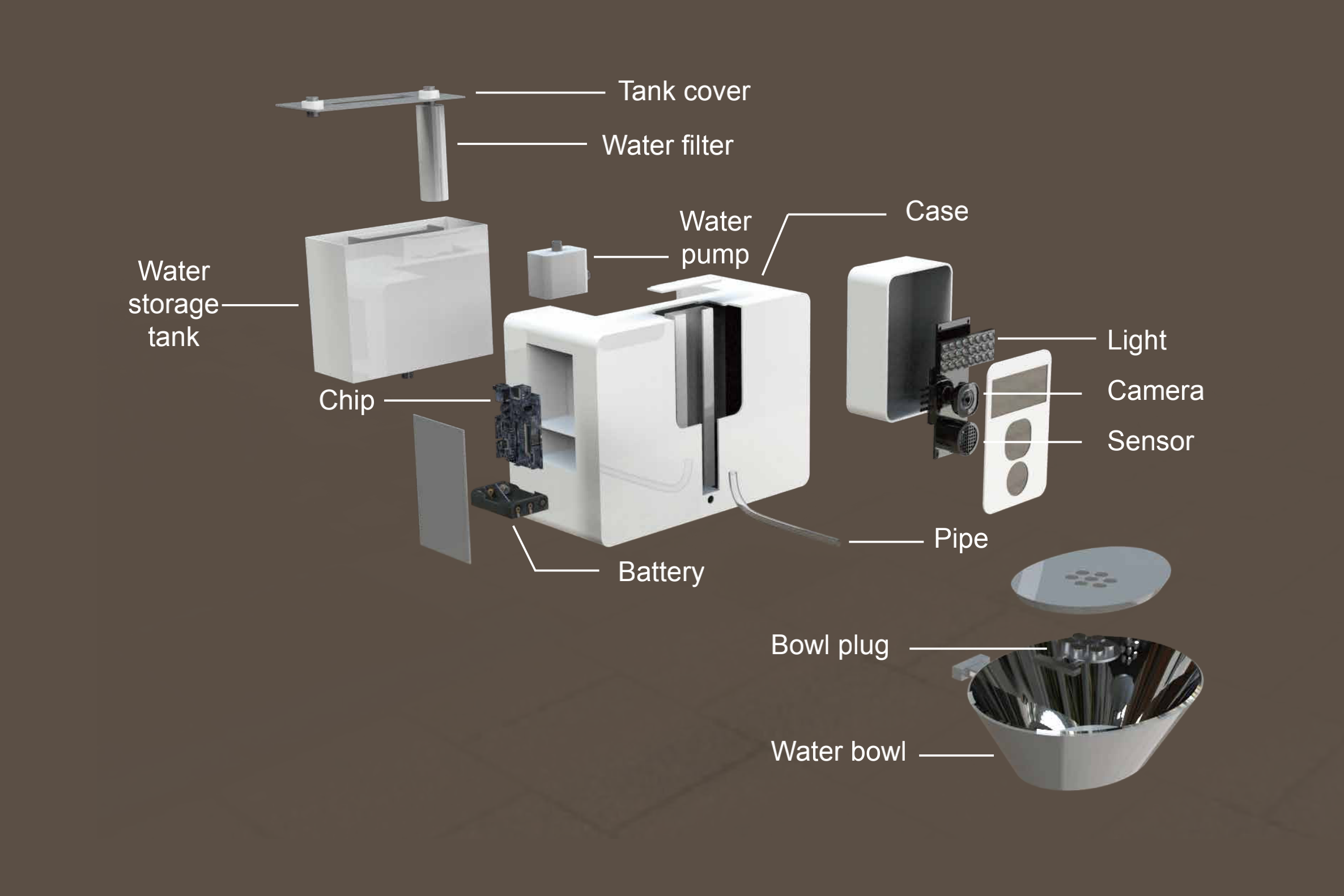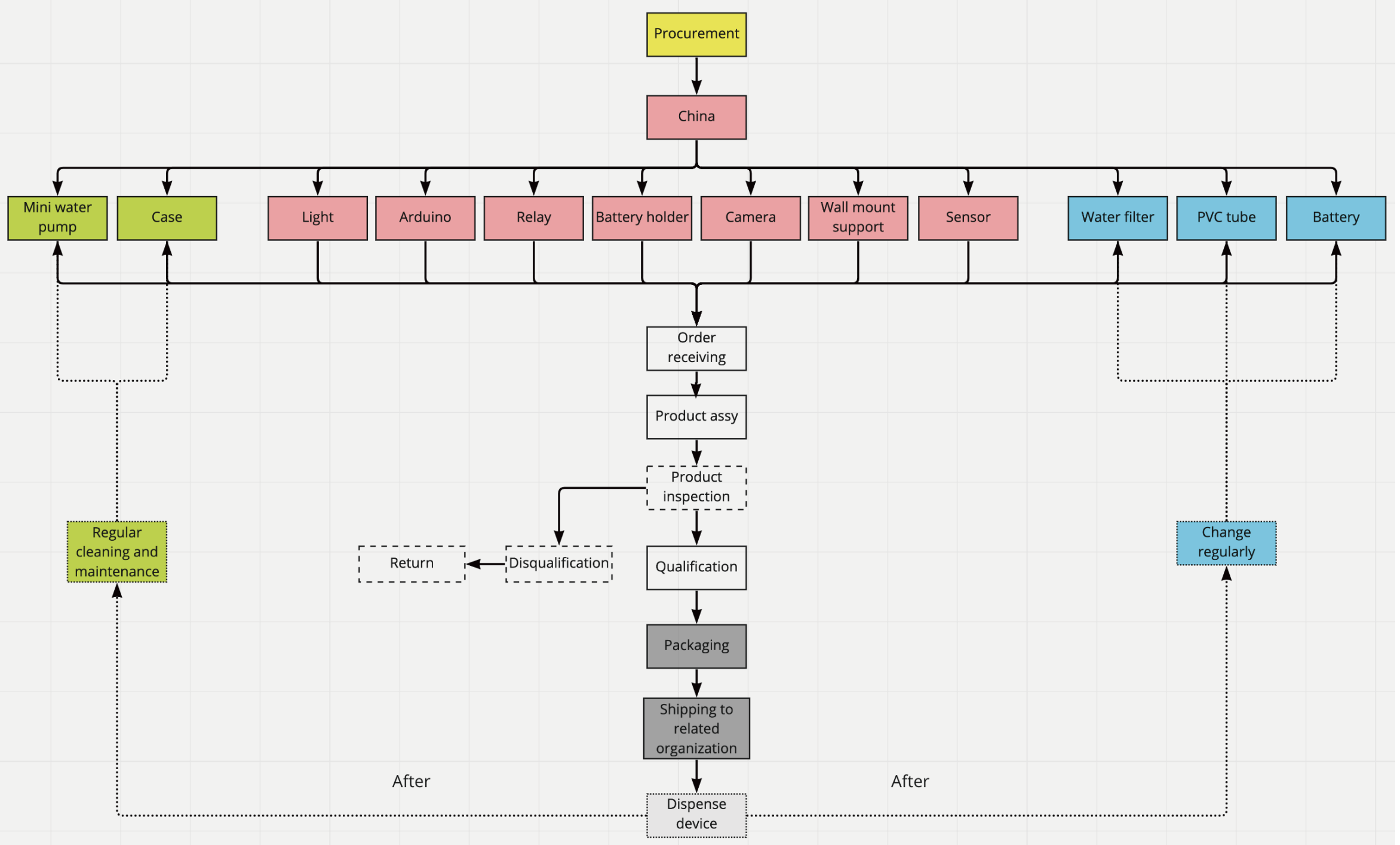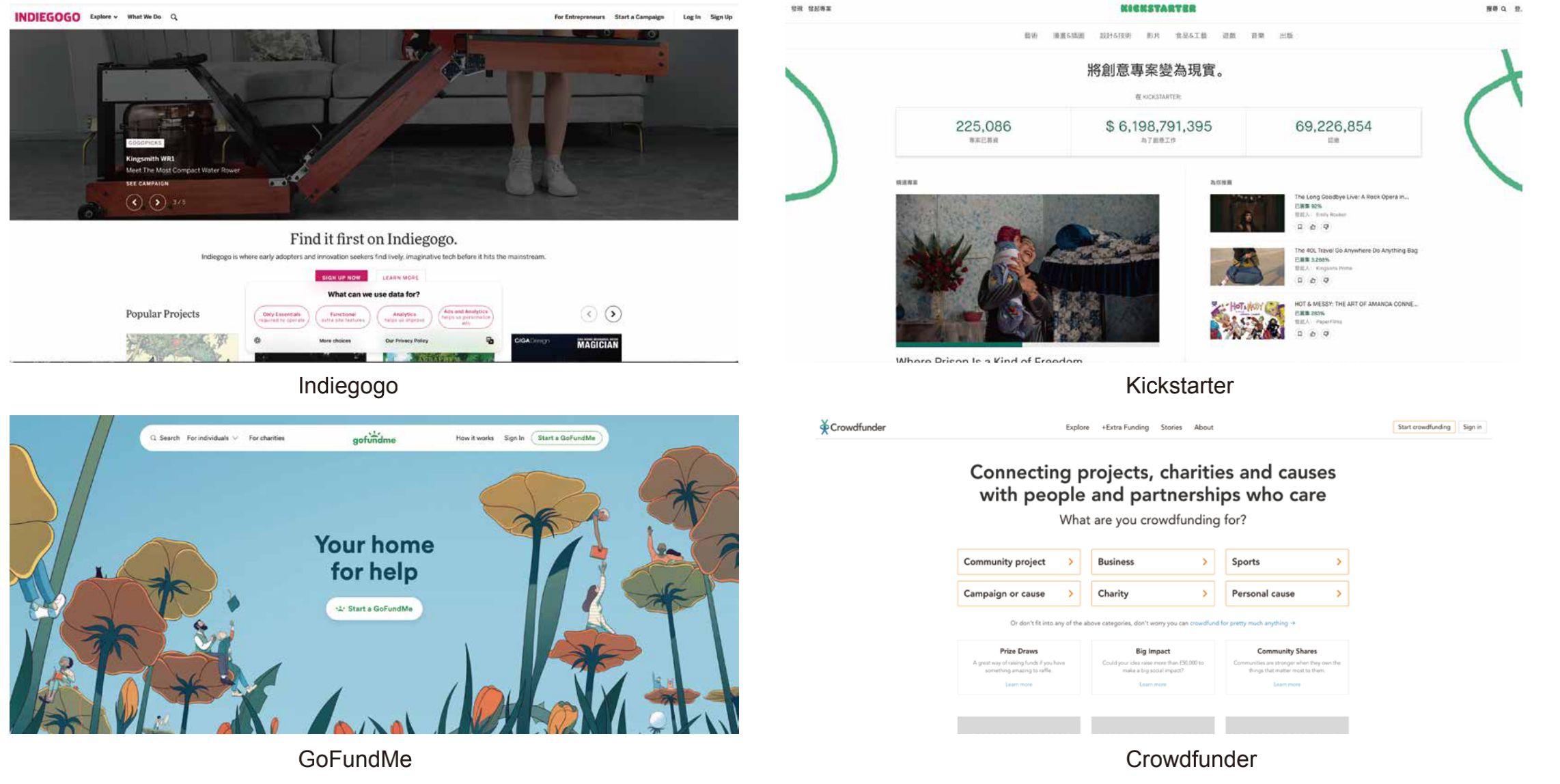In China, there are nearly 95 million stray cats and stray dogs every year. These stray cats and dogs do not have clean water to drink or unified management, so they are weak and sickly. This is a drinking device for stray animals, which provides clean water to these stray animals by filtering the collected rainwater. When an animal comes to use, the device will take a picture of the animal and upload it to the terminal. People can download the app by scanning the QR code on the device to view the photos of the animals that have used this device. When people find a stray animal they like, they can apply for adoption. After the approval, the staff of the animal protection organization will search for the animal and send it to the adopter. People can also use the app to donate money to the animal protection organizations.
Major project
Stray animal drinking device
Product appearance drawing
Stray animals can drinking water from the device, and the device can record the pictures and videos of these animals and collect water from tap or rain pipe.
Product test drawing
Using foam to do testing prototype to test the function of the device.
When animal comes, sensor recognizes it and then starts pump to release water and controls camera to take videos and pictures.
APP
The APP has the following main functions:
1. Provide people with a donation platform to provide funds for the rescue of stray animals.
2. Provide a platform for people to adopt stray animals.
3. Provide people with contact information of stray animal rescue stations.
4. Provide convenience to the staff of the rescue stations.
Product exploded view
This is the exploded view of the device. The main parts are main device, camera, drinking bowl and water storage tank.
Appearance prototype
Using 3D printing and laser cutting to do the appearance prototype.
Supply chain
It adopts the production method of MTS, adopts the sales model of B to B, and directly connects with the relevant departments in the region (charity, government, animal protection organizations, etc.). When the order is received, start ordering parts. The supplier location and assembly location of the parts are both in China. After the assembly is completed, the quality inspection will be carried out. After the quality inspection is passed, it will be shipped to the relevant departments, and the relevant departments will dispense the products. After the product is put into use, some parts need to be cleaned and repaired regularly, and some parts need to be replaced regularly.
Product cost and sale model
It shows the cost of the device. The left figure shows suppliers and prices of components, from which the individual cost decreases as the number of products increases. The right figures show fixed cost and variable cost.
Without considering fixed cost and variable cost, when less than 100 devices are produced, the cost of per device is £41.818. When more than 100 units are produced, the cost of per unit is £39.174.
The equipment will be on a rental model, (using the cost price for more than 100 units as an example) short-term leases (less than six months) will be leased at 15% of the cost per unit per month, i.e. £5.8761 per unit per month. Long-term leases (six months and more) will have a monthly rental price of 8% of the cost, i.e. £3.13392 per unit per month. For a single rental of more than 50 units, an 80% discount will be provided on the total price. Monthly follow-up services are charged at 1% of the cost per device, which is £0.39174 per device per month. Due to the two modes of leasing, the time and quantity of leasing cannot be estimated, so the break-even point cannot be calculated.
Future plan
Improve the technical aspects of the equipment, so that the transmission mode of the camera module is no longer restricted by the local area network. The current idea is to use the SD card storage method that comes with the camera module to store the captured images in the SD card, and the staff will regularly collect these captured images and send them to the terminal.
In the future, more advanced technology will be used to meet the function of automatic screen transmission of the equipment to reduce the workload of the staff.
Choose some crowdfunding platforms for funding, such as Kickstarter, Indiegogo, GoFundMe, and Crowdfunder. To support the launch and modification of subsequent products.
The equipment will be dispensed in a fixed area (park or school). Observe animals that have used the device over a period of time, and then analyze the areas that need to be modified and propose new solutions to solve these problems.
When the device is dispensed at a fixed area, the internal test of the app will be carried out, and people will be invited to experience the app and give feedback. After the modification is completed, a large-scale test will be carried out again. The app will be released after testing is complete. Promote the device and app to people through advertisements, offline events or website, inviting people to pay attention to stray animals and stray animal protection organizations.
After the effect of fixed-point placement is remarkable, the amount of equipment placement and publicity will be expanded, so that more and more people understand these and realize the current situation of stray animals and the importance of adoption instead of purchase. And willing to help stray animal protection organizations.
Jialin Huang
Major project
Stray animal drinking device

